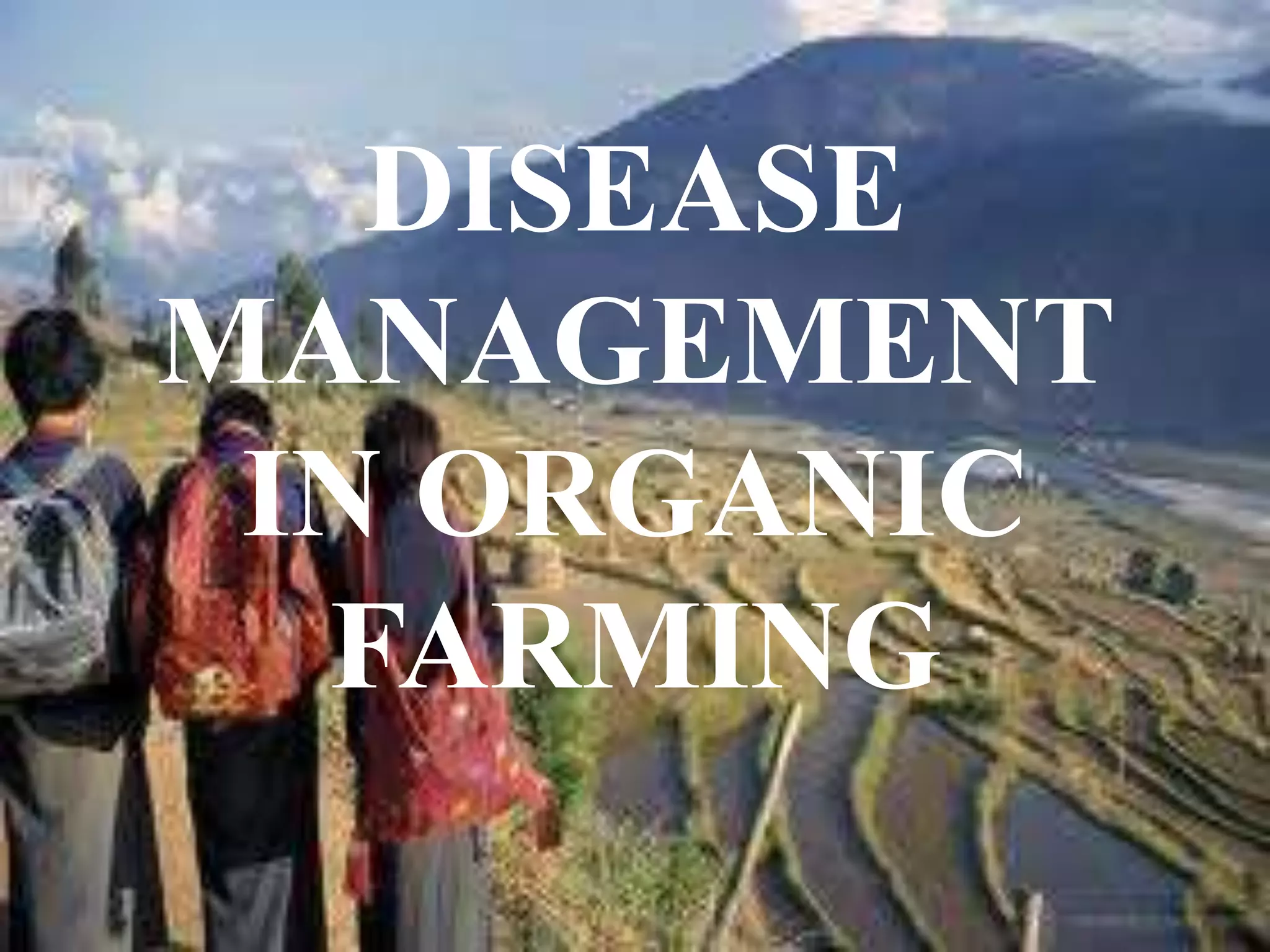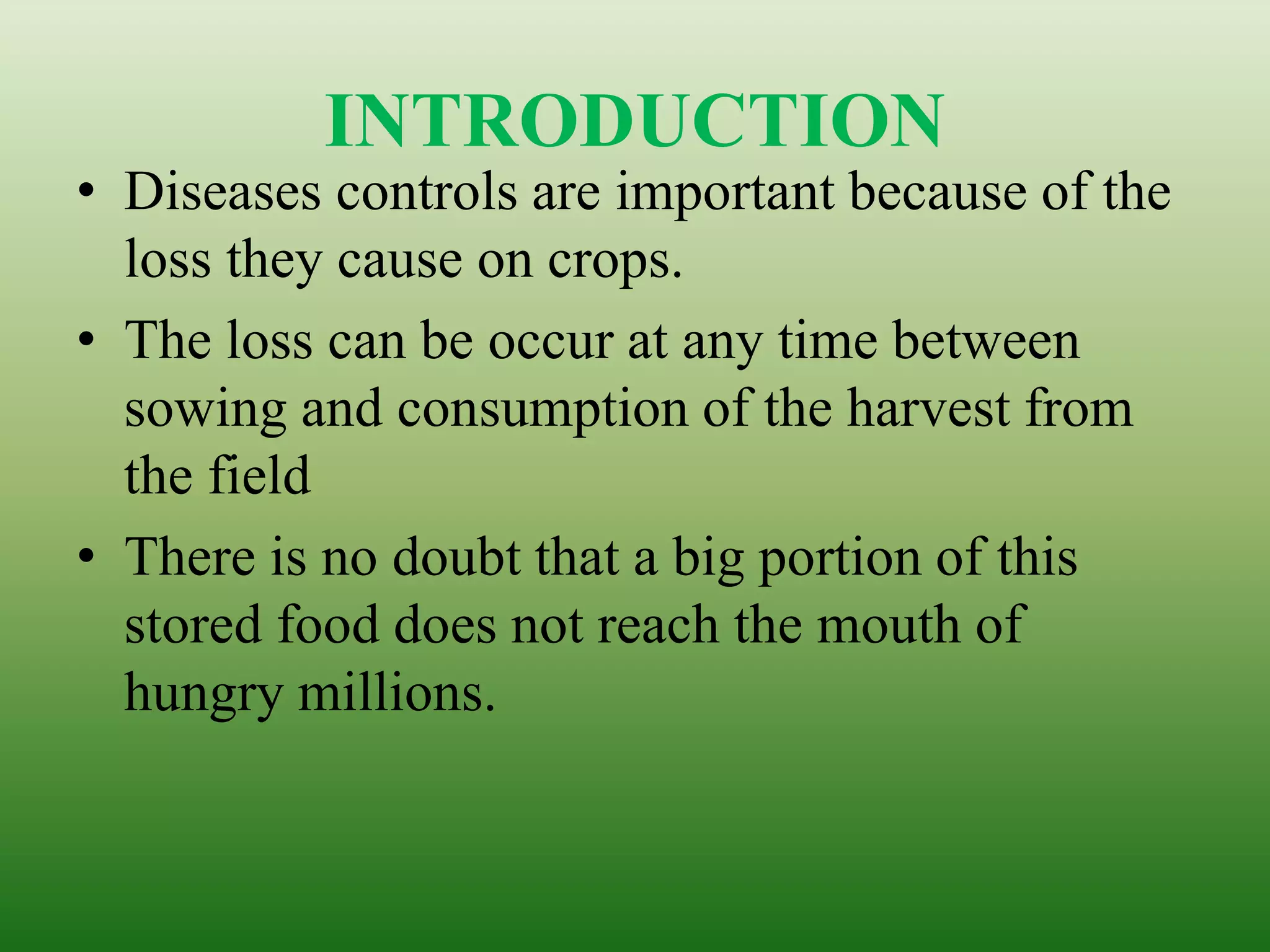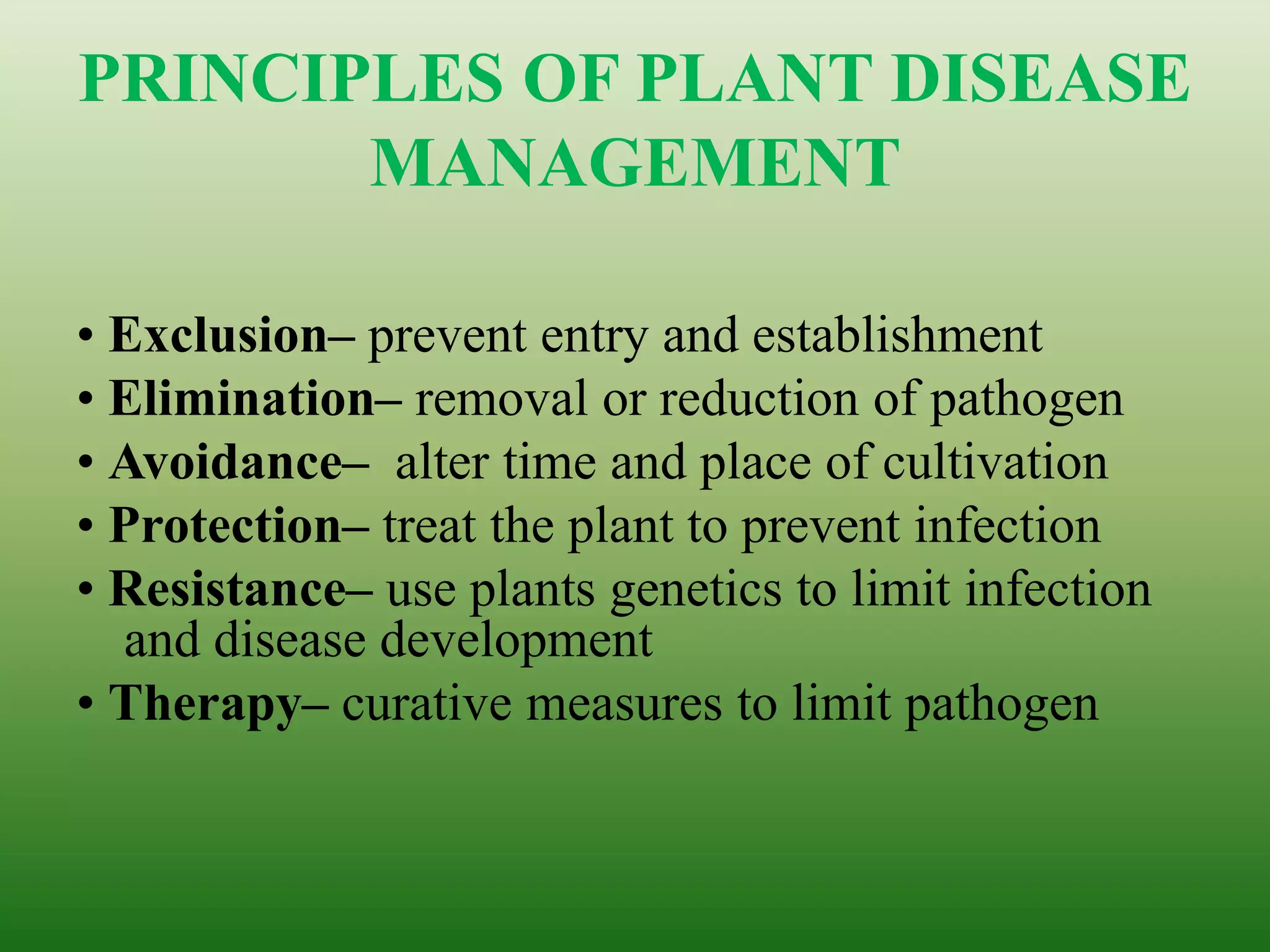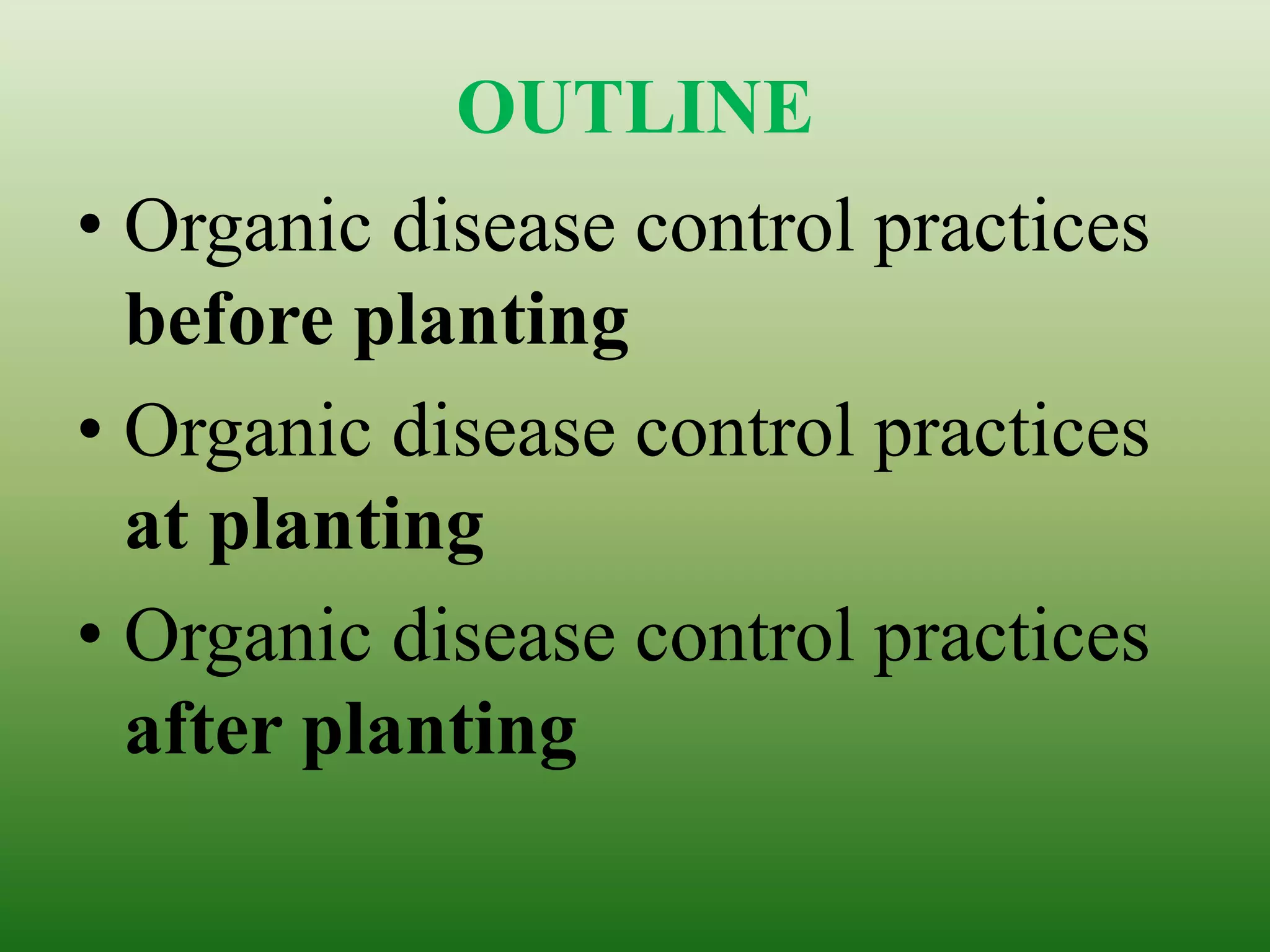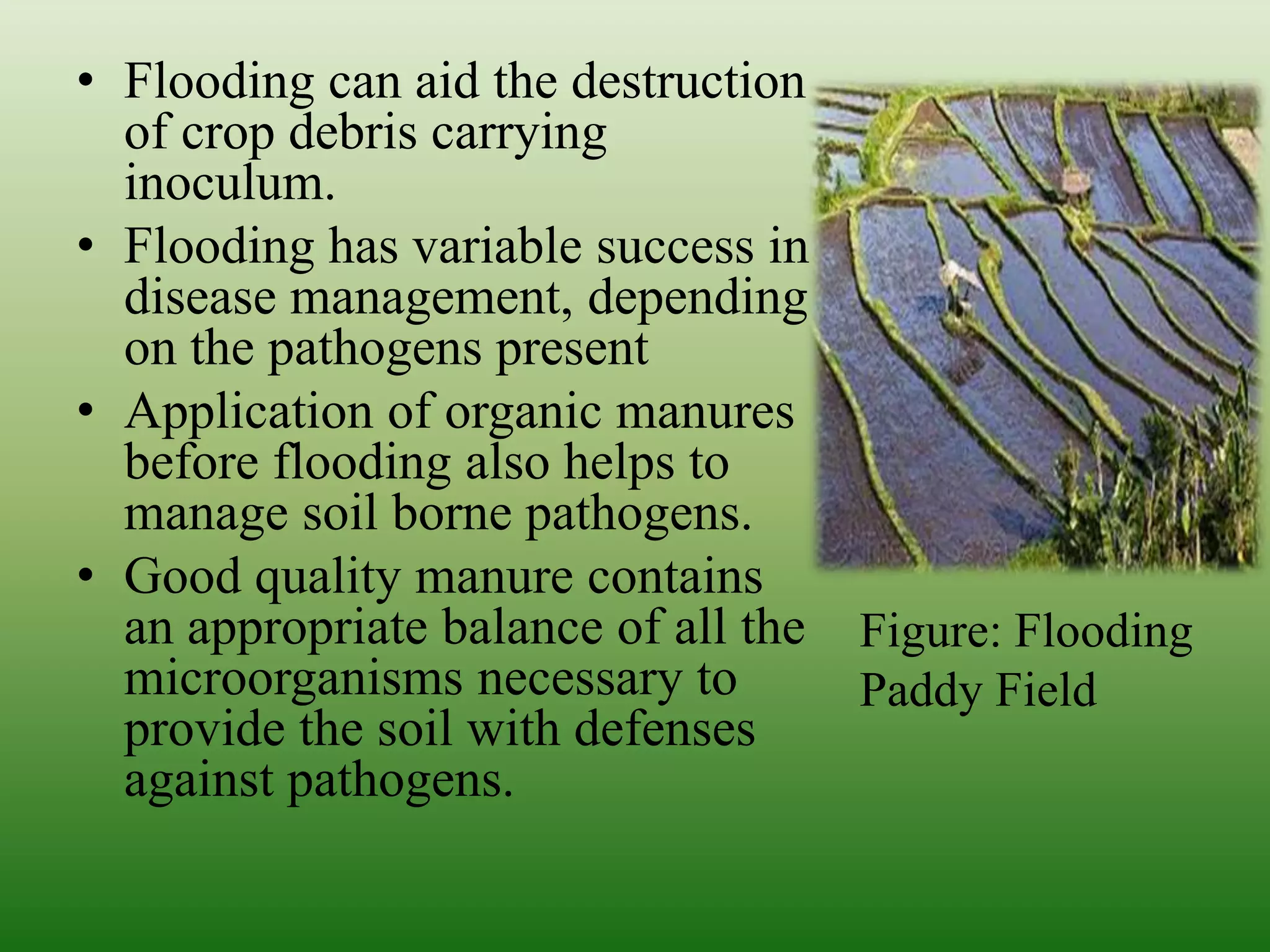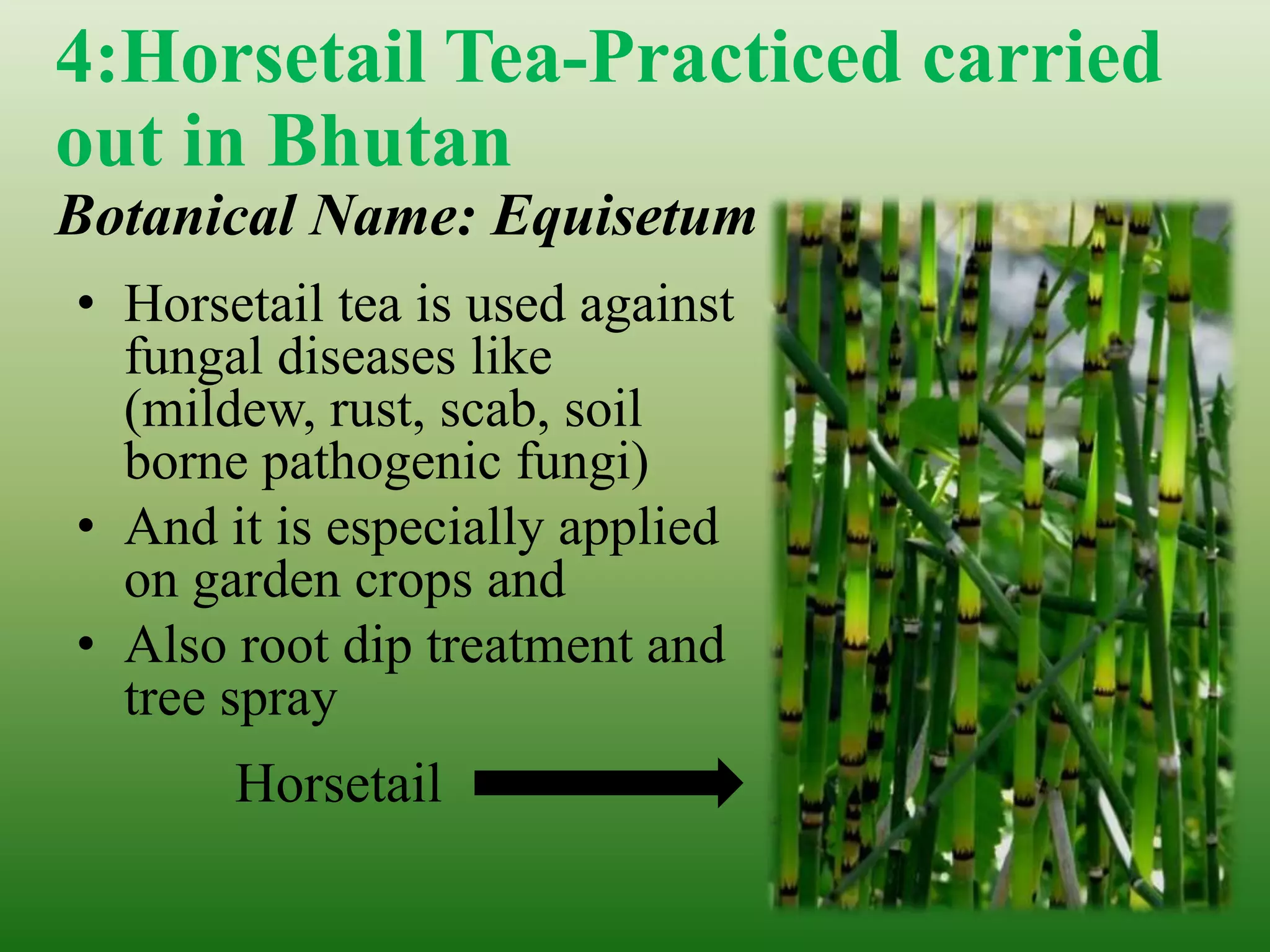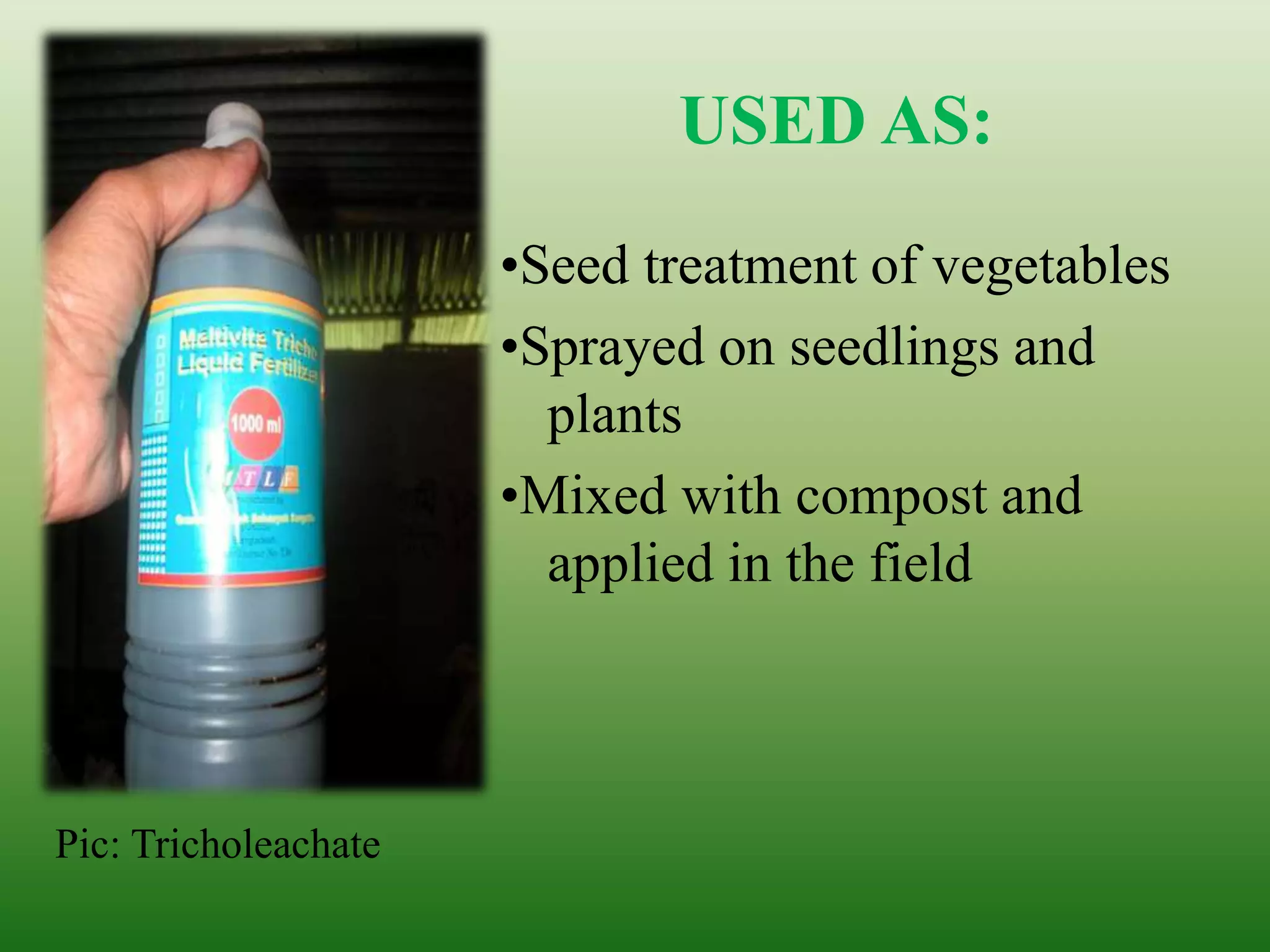This document summarizes organic practices for managing plant diseases on farms. It discusses principles of plant disease management including exclusion, elimination, avoidance, protection and resistance. It then outlines organic disease control practices that can be implemented before, during and after planting, including site selection, composting, crop rotation, and use of beneficial organisms. Specific practices for diseases in crops like tomatoes, cardamom and potatoes are provided as examples. The document notes both benefits and limitations to organic disease management approaches.
